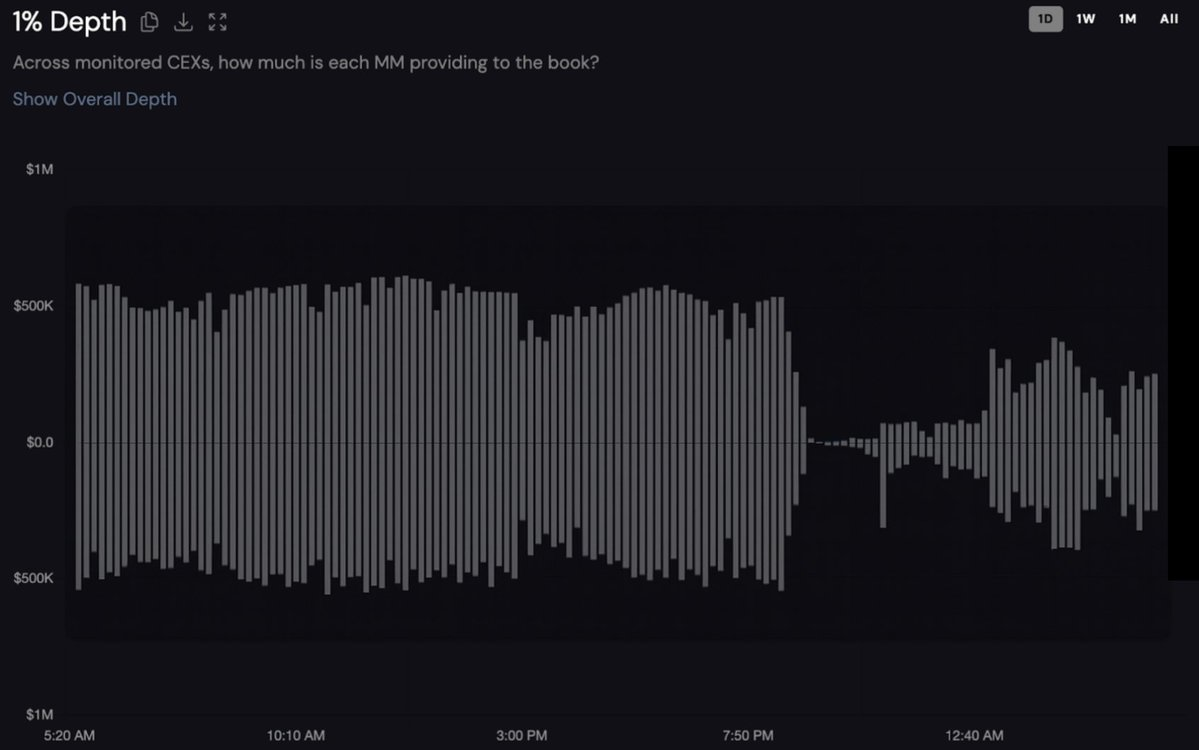
October 10 marked one of the most volatile days in recent market history. Following President Trump’s announcement of a 100% tariff on Chinese imports, the S&P 500 dropped 2% within minutes and Bitcoin fell from $125,000 to $104,000. The resulting cascade of liquidations wiped out over $19B in leveraged positions, the largest crypto unwind ever recorded, affecting more than 1.6M traders globally. The October 10 liquidation was not just a bad day for traders. It served as a real-time stress test for the crypto market. Beyond the headline losses, it revealed important lessons in transparency, design choices, and risk management that will shape how resilient our ecosystem becomes.
We believe that transparency leads to better design choices and risk management for the entire ecosystem.
Exchanges
Every design decision, such as the method of ADL, liquidation, price oracle, insurance funds, or emergency liquidity pools, involves some kind of trade-off. Arguments can be made around whether exchanges should prioritize obligations to their traders on the platform, their token holders, or minimize the overall cascading impact.
However, transparency is of utmost importance so that everyone in the ecosystem can permissionlessly verify the trades, assess the risk, and make decisions accordingly. Full transparency can only be achieved by permissionless verifiability.
Market Makers play a critical role by actively quoting both buy and sell prices for financial instruments, which facilitates price discovery, provides liquidity and reduces volatility. However, market making activities severely lack transparency, especially during volatile events. Theoretically, a market maker can earn more during a high volatility event as the bid-ask spread widens and they can potentially increase profits per trade. However, this also comes with high risk of inventory loss, or hedging failures due to high correlation across all their assets and might even force them to completely exit positions.
It is vital for projects or foundations to be able to track the activity of their MMs in real time. Tools like Coinwatch Track allow projects to monitor their MM activity using API keys, but many large MMs such as Wintermute, Selini, and Jump Trading do not support such tools.
Analysis by Coinwatch shows how a $2B+ FDV token on Binance lost 98% of liquidity in the ±1% depth. They also analyzed a $5B+ FDV token which had 3 MMs. During the crisis, only 1 MM continued to provide liquidity.
As per the Coinwatch analysis, not only did market makers stop market making for a certain period of time, they also pivoted to arbitrage between exchanges as prices across different exchanges diverged.

Crypto market makers are not regulated and hence not legally obligated to provide liquidity in such scenarios. Due to lack of incentives, most market makers decided to pull liquidity to save themselves.
Once we agree that transparency is critical, we can look at some of the design choices that influence how traders select their venues. We do not intend to analyze every feature, but a few of them that stood out in the aftermath:
If you are not familiar with ADL already, Doug Colkitt’s primer is the best starting point. For some reason, ADL has never been so actively discussed before the events of Oct 10.
According to Binance’s FAQ, “Positions that are more profitable and more highly leveraged will be queued for ADL liquidation first, ahead of positions that are less profitable and less leveraged.”
However, what the article fails to cover is that some entities are exempt from ADL based on signed agreements. According to Shokunin, Ethena Labs has negotiated ADL protections for its hedge inventory with major CEXs. This shows smart execution by Ethena but raises the question of neutrality. Unless everyone has the option to pay for similar protection or everyone with a similar risk profile is offered the same protection, the CEXs are not being fair to their users.
Another key factor for consideration is under what circumstances will the ADL be triggered. ADL is a last resort measure to prevent an account deficit from being created after market liquidation and insurance funds have failed to absorb the losses. For many exchanges, the size of the insurance funds is not known and how much loss was absorbed by these funds is also not transparently known. BitMex reported a $2M loss by their insurance fund before 15 contracts were auto de-leveraged. Hyperliquid’s protocol vault, HLP, backstop liquidated billions of dollars worth of positions before ADL was triggered. HLP ended up earning ~$40M via liquidity provisioning at favourable prices. For many other exchanges, the size of insurance funds and realized losses before ADL trigger is not known.
One of the most debated topics during and immediately after the liquidation cascade was whether the USDe depeg actually happened.
USDe’s price hit $0.95 on Bybit and quickly recovered, but it hit $0.68 on Binance. Due to this, Binance started liquidating positions which it should not have.
Binance later announced plans to compensate users with $283M for de-pegging of certain Binance Earn products related to USDe, BNSOL, and WBETH. While the compensation takes into account the losses suffered by its users, it does not account for the panic and volatility these liquidations triggered.
As Omer A. Goldberg pointed out, CEX pricing is not equal to oracle pricing.
“A real oracle must go deeper. It must integrate every structural layer—reserves, counterparties, redemption logic, protocol logic, and dependencies—to produce a risk-aware measure of value. Otherwise, you’re not pricing assets; you’re quoting volatility.”
Major lending protocols such as Aave and Morpho Labs hardcoded USDe’s price to $1, which prevented large-scale DeFi liquidations. However, we don’t believe hardcoding is the best choice here.
It is true that the oracle price should not be based on a single venue (even if it is the primary trading venue) because concentration creates manipulation vulnerability—but it should not simply be hardcoded. YQ goes into a lot more detail on this topic.
When a trader’s account equity drops below the maintenance margin requirement, a liquidation event is triggered. Some exchanges charge liquidation fees:
How liquidations are handled and what fees are charged will matter more to traders in the future.
While the liquidation cascade was ignited by escalating trade tensions between the U.S. and China—possibly compounded by the risk of a U.S. government shutdown—there was no single catalyst like FTX, Luna, or Celsius that triggered the collapse.
As Keyrock Trading pointed out in their weekly analysis,
“Retail FOMO, synthetic collateral, and speculative narratives around perpetual DEXs masked how thin real liquidity had become.”
The 2008 Global Financial Crisis was fueled by excessive leverage and highly correlated asset exposure across the financial system. Banks and investors borrowed heavily to buy mortgage-backed securities that all depended on the same underlying housing market. When housing prices fell, these correlated assets collapsed simultaneously, wiping out capital and triggering forced deleveraging.
Crypto faces a similar risk where the assets are highly correlated and can lead to significant forced liquidations and deleveraging.
Most DeFi protocols only accept blue-chip assets such as BTC and ETH as collateral, which played a huge role in saving DeFi. The biggest silver lining was that the DeFi stack absorbed the shock without mechanical contagion.
No emergency circuit breakers were invoked, and major lending protocols like Aave cleared liquidations without incurring bad debt. EtherFi’s weETH held its peg within 5bps of ETH.
The events also highlighted the tremendous work being done by Chaos Labs. Risk management is extremely nuanced and requires a deeply risk-aware oracle stack. We expect many more DeFi protocols to leverage their data going forward.
Finally, this is a reminder that every market participant should be ready for tail events. If we don’t prepare ourselves for such events, markets will humble us from time to time.
The ethos of decentralization, verifiability, and permissionless deployment is not enough for a product to attract users on day one. However, days like these remind us that these are essential principles.
As a protocol scales and manages millions in user positions, it must steadily incorporate these foundations into its design and operations.
This is also one of the best opportunities for CEXs to become more transparent, prioritize customer interest, and increase their market share.
Users, traders, and everyone in the ecosystem should raise difficult questions and learn from this episode so that the entire space can make progress and emerge stronger.